

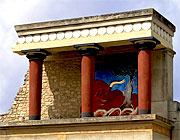
The Palace of Knossos is a fascinating site, affording a glimpse into palatial life on the island of Crete thousands of years ago.
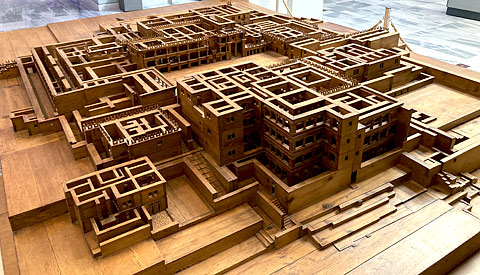
Of all the ancient palaces on Crete, Knossos was the largest and lasted the longest.
The site today is fascinating and has a lot of information boards. It was partially reconstructed under the instructions of Arthur Evans who did most of the excavating here, though the initial discoverer of the palace was Minos Kalokairinos in 1878. There are differing opinions on the worth of the (quite extensive) reconstructions, but they do help the visitor to visualise the palace as it might have looked in its heyday.
It is also well worth visiting the Heraklion Archaeological Museum1 which has a wealth of Minoan artefacts from Knossos and a very good model of the palace. The photographs of artefacts on this page were all taken at the Archaeological Museum which also has a wealth of information on outstanding artefacts.
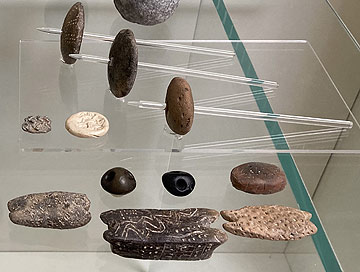
The Kephala hill, south of modern day Heraklion, stands at the confluence of two streams, an ideal spot on which to build a settlement, and there have been people living here for thousands of years from the Neolithic period, 7000-3000 BC. The pile huts of the first small settlement gave way to small houses built close together around open spaces where the inhabitants carried out daily activities together.
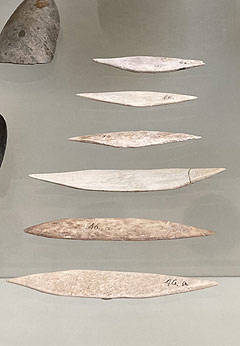 Bone Awls for piercing soft material such as leather.
Bone Awls for piercing soft material such as leather.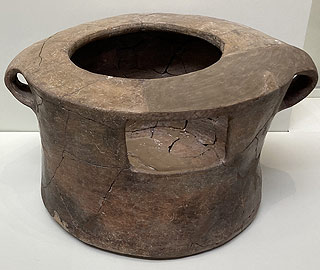
The settlement was obviously quite secure and prosperous as by 3000 BC it had grown to around 25,000 sq m. By then each house was sturdily built on strong foundations with its own areas for particular functions with hearths and ovens, built-in benches and walled yards.
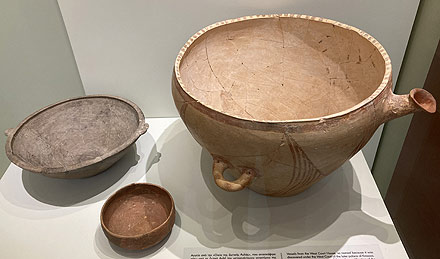
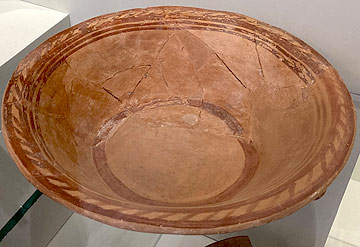
It wasn't until 1900 BC, however, that the first palace was built. The basic plan of the palace changed little after this. After its destruction in 1700 BC the New Palace was built and it is this palace that Arthur Evans uncovered.
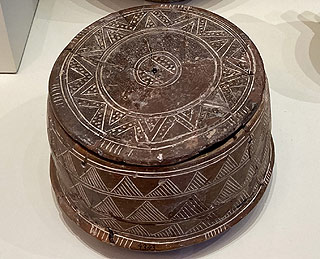
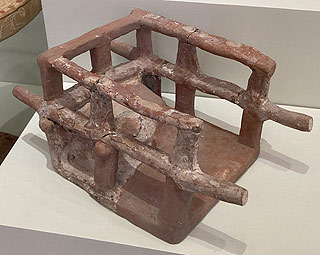
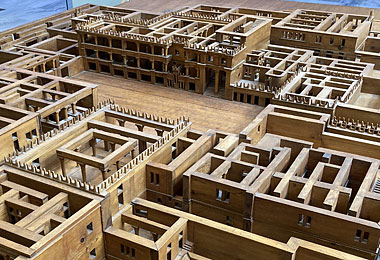
As with most of the Cretan palaces, the various buildings are arranged around a large central courtyard. At Knossos the West Wing included shrines, official halls and extensive storage areas. The East Wing was where the "Royal Apartments" were situated, along with workshops. The palace was not only the residence of the ruler and his family, but also the centre of political, administrative, economic and religious affairs, hence the shrines and large halls.
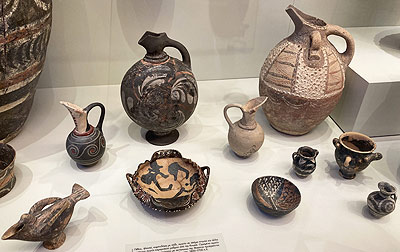
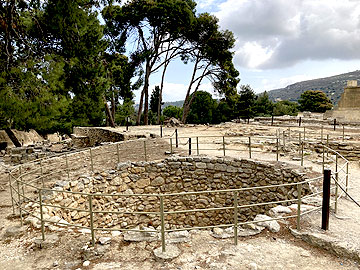
The visitors route through the palace begins on the western side where there are three large stone-lined pits known as "Koulores". These were built in the "Old Palace" period (1900-1700 BC) but their function is unclear - possibly grain storage pits. Here is one of the entrances to the palace, the others are on the east and north sides and one on the south west corner.
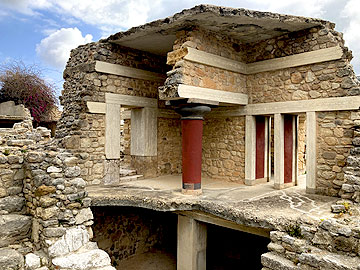
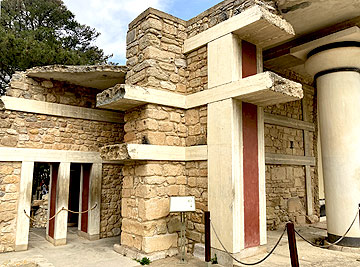
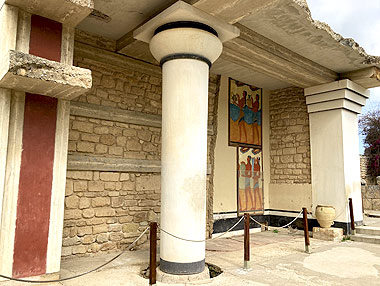
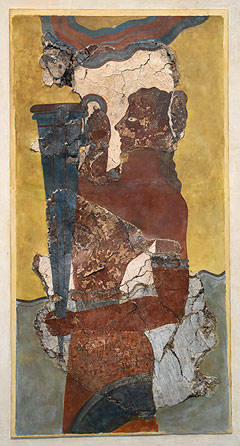
The "South Propyleum" is one of the buildings "restored" by Evans. He placed a copy of the "Cup-Bearer" fresco here.
The original, dating from 1500-1400 BC, was once part of a large wall painting which decorated the wall of the Processional Corridor between the West Porch and the South Propyleum. Both long walls of the corridor were decorated with hundreds of male and female figures carrying precious utensils and vessels, perhaps commemorating an actual procession of gift-bearers from the town to the upper storey of the palace.
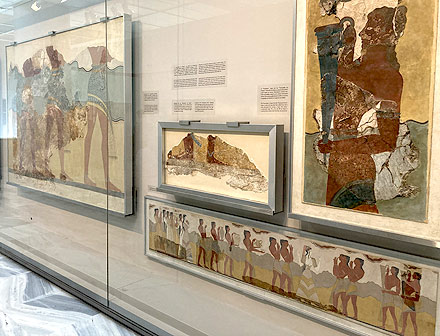
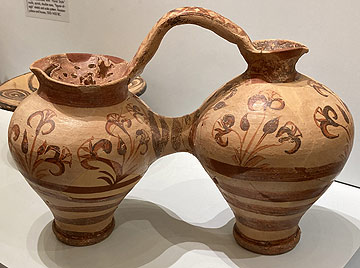
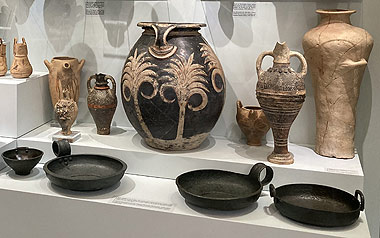
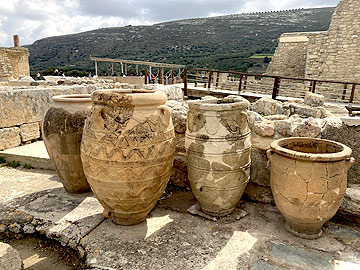
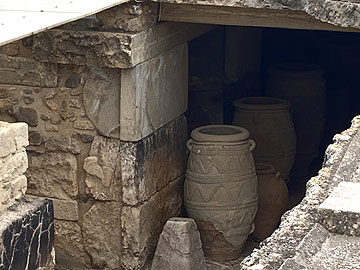
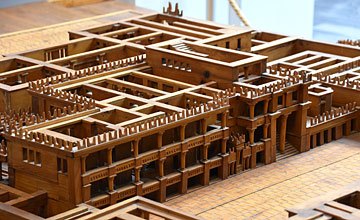
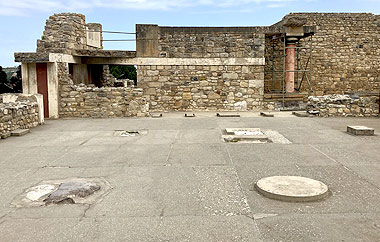
West Magazines, storage areas on the lower level of the west side of the palace can be seen from the upper level north of the South Propyleum.
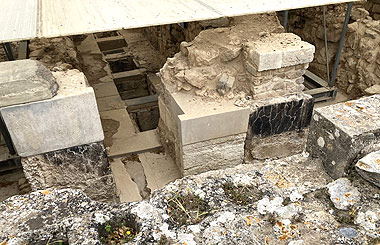
These were 18 long and narrow storage rooms covering 1300 sq m with a long corridor running alongside. In the floor of both the storage rooms and the corridor were 93 rectangular chambers which were apparently used to keep precious vases and equipment safe. Even larger chambers in the floor of the corridor were lined and may have been used to store liquids.
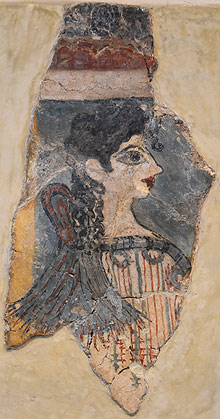
Fragments of a fresco called the "Camp stool fresco", depicting scenes of banqueting, were found in the upper hall of the west wing of the palace. These were probably representative of actual banquets which took place there.
On the east side of the upper level a staircase (reconstructed by Evans) leads down into a large, rectangular, central court. Here there may well have been public meetings, perhaps sacred events.
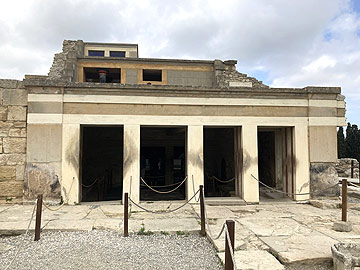
On the west side of the central court, on the northern edge of the staircase, is the Throne Room, reached by way of an antechamber a few steps down from the court.
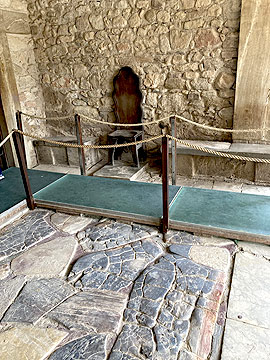
The antechamber had stone benches on the north and south walls, the one on the north wall has a gap where a wooden "throne" now stands. A doorway in the west wall leads to the Throne Room. This room also has stone benches around the walls and, on the south side behind pillars, a sunken space. A similar room at Akrotiri (lustral basin) was thought to be a ritual space. On the north wall of the Throne Room is a carved stone throne.
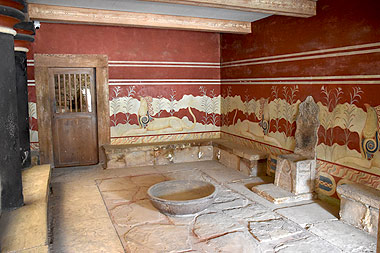
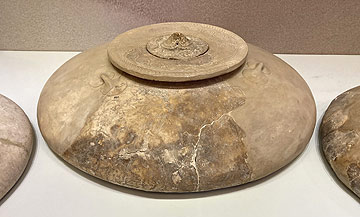
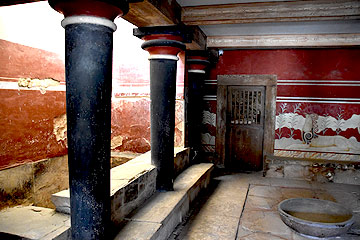
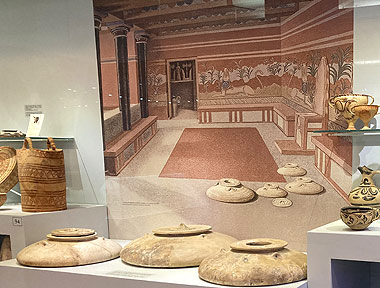
Frescoes of wingless griffins adorned the walls. Their being wingless could be interpreted as signifying they are permanent guardians of the throne which is a symbol of authority.
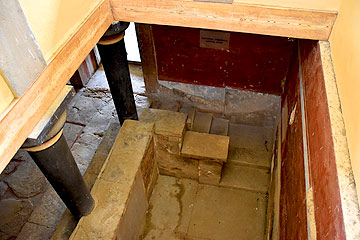
South of the Throne Room, on the other side of the staircase, are a set of rooms interpreted as belonging to a shrine. Evans called this the "Tripartite Shrine" in reference to the facade being in three parts divided by columns.
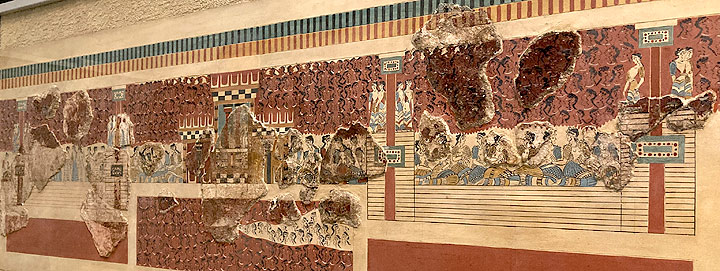
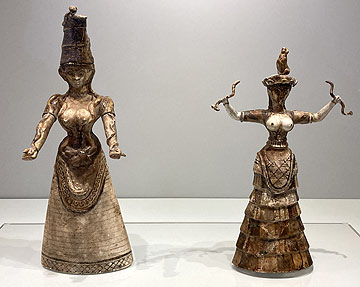
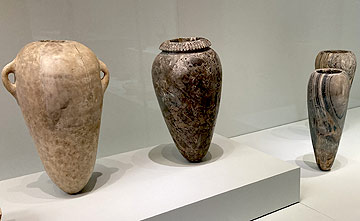
Behind the shrine were more rooms, two large stone-built repositories sunk into the floor of one which has been called the "Temple Repositories". These held precious objects including figurines of the "Snake Goddess".
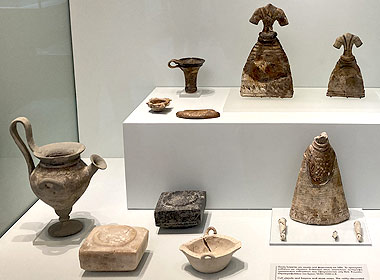
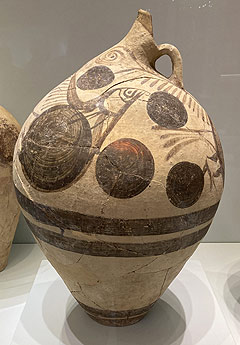
A corridor on the south side of the central court led to an entrance to the palace.
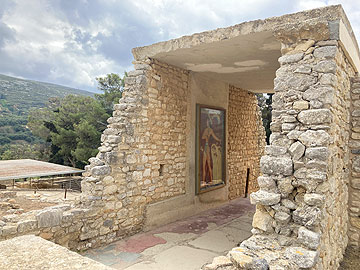
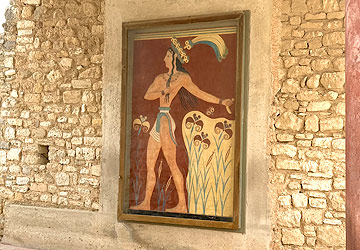
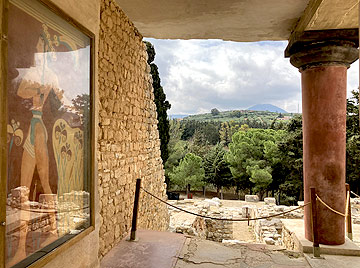
Evans reconstructed the section of the corridor closest to the central court and erected a replica of a relief fresco of which only a few fragments were found, the replica is thus uncertain, though rather beautiful, and dubbed "Prince of the Lilies". The original fragments are now in the Heraklion Archaeological Museum.
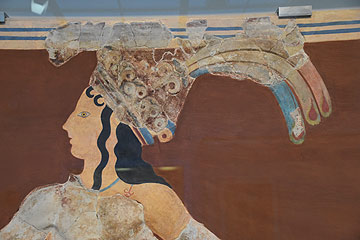
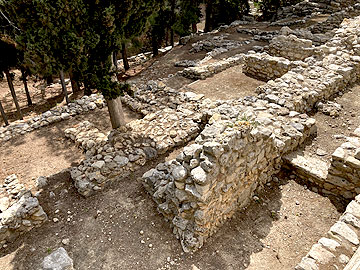
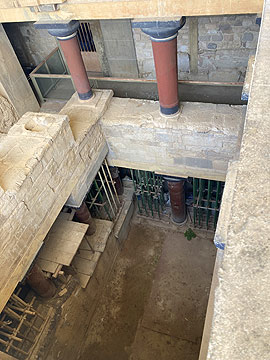
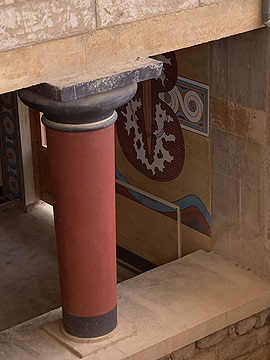
The east wing of the palace is built on the slope of the hill. It is an extensive series of room, originally on four floors, accessed by the so-called "Grand Staircase" with two flights on each storey. The two storeys below the level of the Central Court are well-preserved.
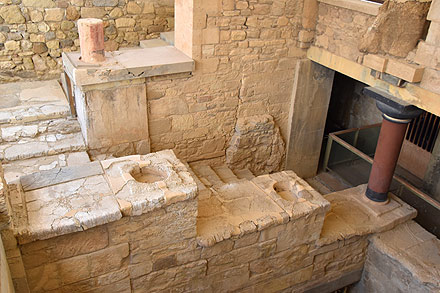
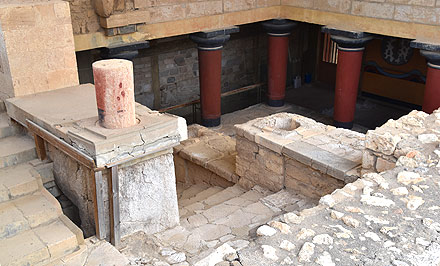
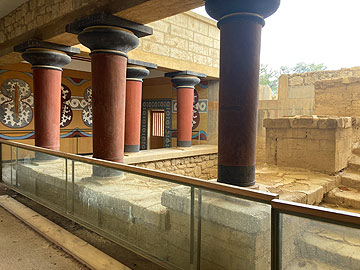
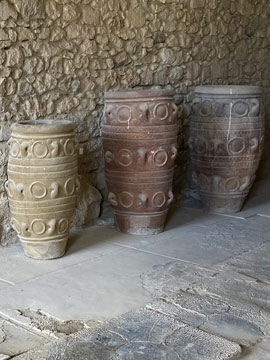
There are "magazines" on the lower levels - the information boards routinely use "magazine" as meaning a storage area, usually of pithoi, the large earthenware storage jars.
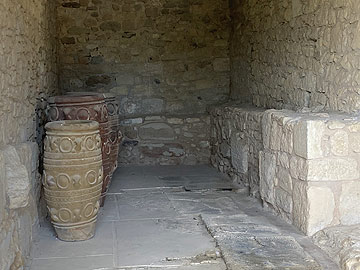
The palace had a sophisticated drainage system which collected rain water for storage, delivered fresh water from springs and removed waste.
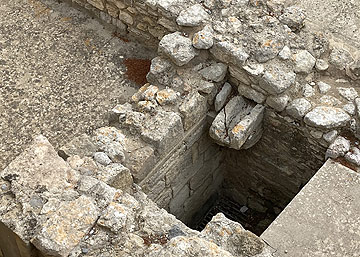
A remarkable find was made in the north eastern region of the palace: a beautiful board from a game, the so-called "Royal Gaming Board", plated with gold and silver and inlaid with ivory, blue glass paste and rock crystal. The notes on this piece in the museum in Heraklion say that it is a "particularly complex and luxurious artefact, which bears witness to the high standard of living in the palace and the artistic capabilities of Knossian workshops." Four conical gaming pieces correspond to circular shapes on the board.
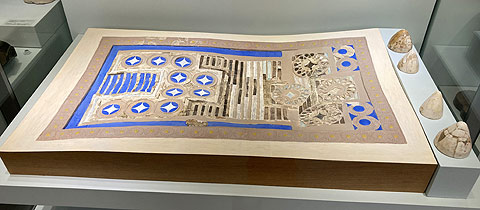
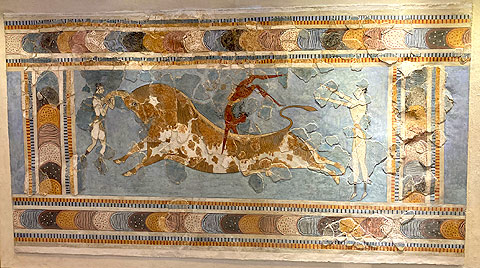
Sporting and athletic activities were important in Minoan culture, in particular the spectacular and dangerous sport of bull-leaping. An athlete - men and women both took part - would leap over the horns of a charging bull, performing a somersault to land behind it.
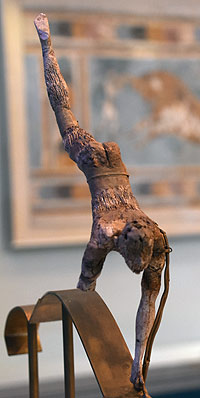
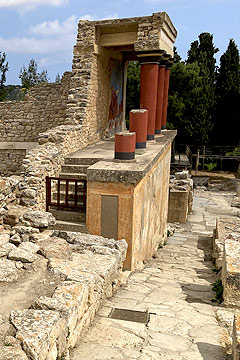
The North Entrance to the site was a narrow, paved, unroofed passage flanked by what were once two raised colonnades, called bastions.
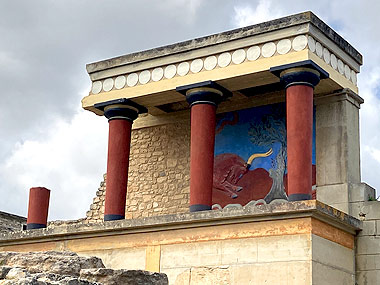
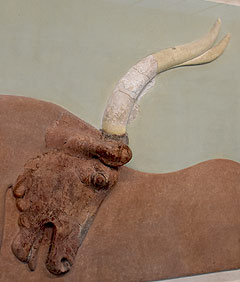
Arthur Evans partly reconstructed the West Bastion and erected within it a copy of a relief fresco of a bull; the original is now in the Heraklion Museum.
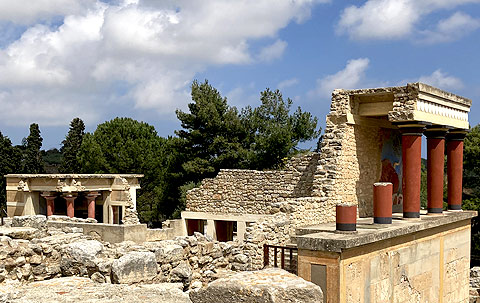
A short distance west of the North Entrance is a structure which Evans called the North Lustral Basin.
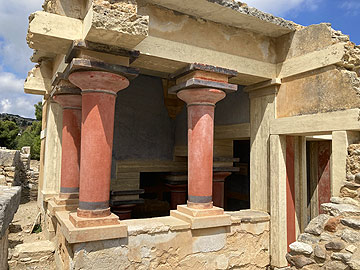
Evans completely reconstructed this building which resembles some kind of cistern, the floor being lower than the surrounding area and reached by steps. It is unlikely that it was filled with water however, one reason being that there is no means to drain it. There are several such rooms in the palace.
Evans believed that the palace was a sacred place and that purification ceremonies were performed in these Lustral Basins.
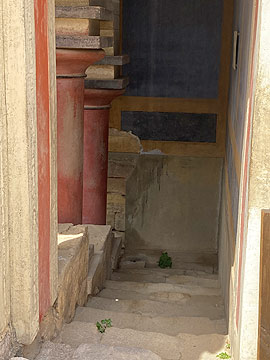
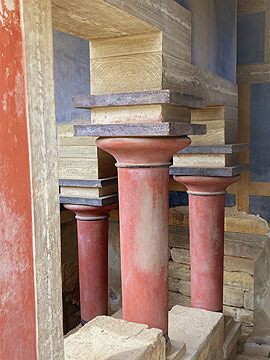
The palace is really interesting. However, to the museum in Heraklion is a must to see some of the wonderfully skillful and evocative artefacts which came from the palace.
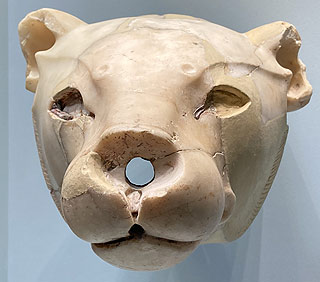
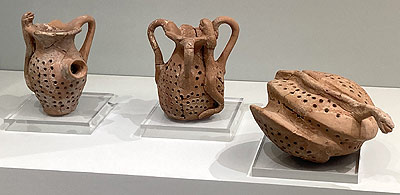
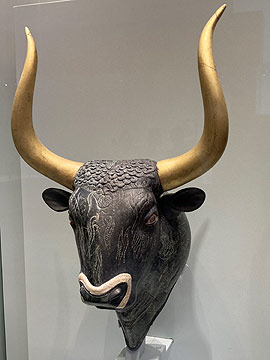
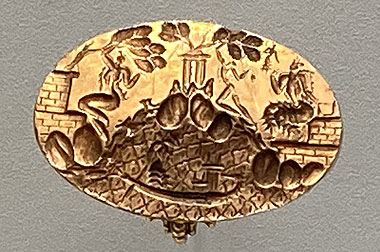
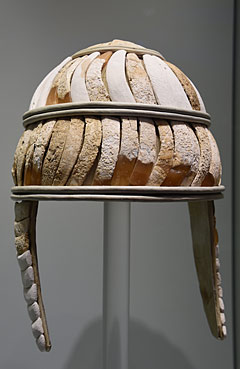
Knossos was the only palace to survive after 1450 BC when all the other palaces on the island were destroyed. It is widely believed that Myceneans occupied the island at this stage and made Knossos their centre. From Knossos they controlled an extensive area of Crete from the west to the east coasts. The wall paintings of griffins in the Throne Room date from this period.
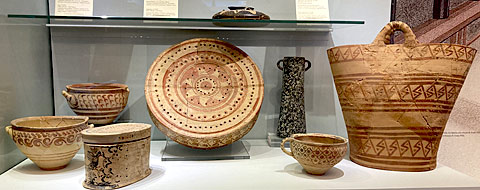
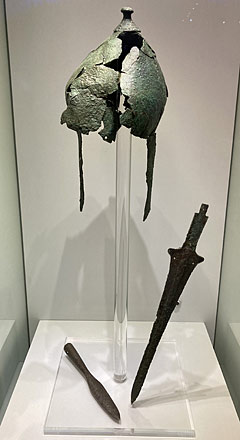
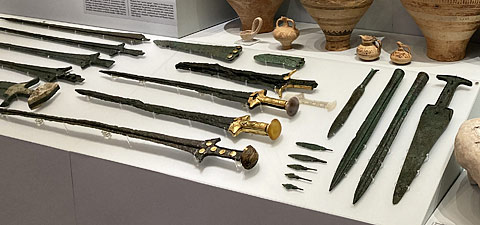
The Palace of Knossos was finally destroyed around 1300 BC, marking the end of the palatial world across most of the island.